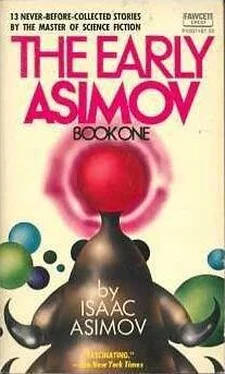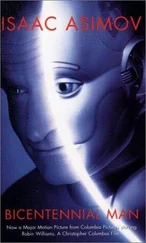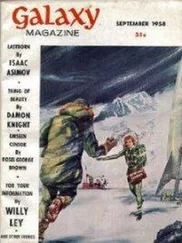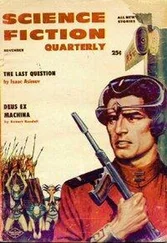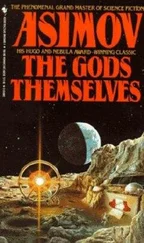Isaac Asimov - The Early Asimov. Volume 1
Здесь есть возможность читать онлайн «Isaac Asimov - The Early Asimov. Volume 1» весь текст электронной книги совершенно бесплатно (целиком полную версию без сокращений). В некоторых случаях можно слушать аудио, скачать через торрент в формате fb2 и присутствует краткое содержание. Год выпуска: 1986, ISBN: 1986, Жанр: Фантастика и фэнтези, на английском языке. Описание произведения, (предисловие) а так же отзывы посетителей доступны на портале библиотеки ЛибКат.
- Название:The Early Asimov. Volume 1
- Автор:
- Жанр:
- Год:1986
- ISBN:ISBN 034-532590-7
- Рейтинг книги:3 / 5. Голосов: 1
-
Избранное:Добавить в избранное
- Отзывы:
-
Ваша оценка:
- 60
- 1
- 2
- 3
- 4
- 5
The Early Asimov. Volume 1: краткое содержание, описание и аннотация
Предлагаем к чтению аннотацию, описание, краткое содержание или предисловие (зависит от того, что написал сам автор книги «The Early Asimov. Volume 1»). Если вы не нашли необходимую информацию о книге — напишите в комментариях, мы постараемся отыскать её.
The Early Asimov. Volume 1 — читать онлайн бесплатно полную книгу (весь текст) целиком
Ниже представлен текст книги, разбитый по страницам. Система сохранения места последней прочитанной страницы, позволяет с удобством читать онлайн бесплатно книгу «The Early Asimov. Volume 1», без необходимости каждый раз заново искать на чём Вы остановились. Поставьте закладку, и сможете в любой момент перейти на страницу, на которой закончили чтение.
Интервал:
Закладка:
As I reread the story now (it’s the first time I’ve reread it since it was published) I am amused to see that my stowaway youngster’s name is Stanley. That is the name of my younger brother, who was only nine when I wrote the story (the same younger brother who was the subject of my Boys’ High essay, and who is now Assistant Publisher of the Long Island Newsday). Why it is necessary to use “real names” I don’t know, but almost every beginning writer does so, I suspect.
You will notice that there are no girls in the story. This is not really surprising. At eighteen I was busy finishing college and working in my father’s candy store and handling a paper delivery route morning and evening, and I had actually never had time to have a date. I didn’t know anything at all about girls (except for such biology as I got out of books and from other, more knowledgeable, boys).
I eventually had dates and I eventually introduced girls into my stories, but the early imprinting had its effect. To this very day, the romantic element in my stories is minor and the sexual element virtually nil.
On the other hand, I wonder if the above explanation for the lack of sex in my stories is not an oversimplification. After all, I am also a teetotaler and yet I notice that my characters drink Martian Jabra water (whatever that is).
My knowledge of astronomy was quite respectable but I let myself be overinfluenced by the conventions common in the science fiction of that era. All worlds were Earthlike and inhabited in those days, so I gave Callisto an atmosphere containing a small quantity of free oxygen. I also gave it running water, and both plant and animal life. All of this is, of course, unlikely in the extreme, and what evidence we have seems to make of Callisto an airless, waterless world like our Moon (and, of course, I really knew this even back then).
Back to my third story, now-
On July 30, 1938, only eight days after Campbell’s second rejection, I had finished my third story, “Marooned off Vesta.” I did not think it politic to see Campbell oftener than once a month, however, since I suspected that I might easily wear out my welcome if I did. I put “Marooned off Vesta” to one side, therefore, and began to write other stories. By the end of the month I had two more: “This Irrational Planet” and “Ring Around the Sun.”
My first three stories, including “Marooned off Vesta,” had been typed on a very old, but completely serviceable Underwood No. 5 typewriter, which my father had obtained for me in 1936 for ten dollars. After I had submitted my second story to Campbell, however, my father decided that I was in earnest about a writing career, and feeling that my failure to sell was irrelevant and, in any case, temporary, he set about getting me a brand-new typewriter.
On August 10, 1938, a Smith-Corona portable entered the house and it was on the new typewriter that my fourth and fifth stories were written.
Of the three, I felt “This Irrational Planet” to be the weakest, so I did not submit it to Campbell. I submitted it directly to Thrilling Wonder Stories on August 26, and it was not rejected till September 24. Campbell had spoiled me, and the four-week interval between submission and rejection appalled me. I even called during that interval to make an indignant inquiry-not knowing that a mere four-week wait was brief indeed for anyone but Campbell.
But at least the rejection, when it came, was typewritten ‘ and was not a printed form. What’s more, it contained the sentence, “Try us again, won’t you?” That encouraged me. Perhaps I underestimated the story. Buoyantly, I tried Campbell, and he rejected it in six days. Five other magazines rejected it afterward. I never did sell it, and “This Irrational Planet” is also nonexistent now. I don’t even remember the plot, except that I’m pretty certain that the planet of the title was Earth itself. (The only other information I have about it is that it was quite short, only three thousand words long. Actually, most of the stories of those early years that I never sold, and no longer exist, were short. The longest was the first, “Cosmic Corkscrew.”)
The other two stories written in the same month were reserved for a better fate, but it didn’t seem so at first On August 30, 1938, I visited Campbell for the third time and submitted both “Marooned off Vesta” and “Ring Around the Sun”-and both were returned to me on September 8.
The very next day I shipped off “Marooned off Vesta,” which I felt to be the better of the two, to Amazing Stories . It took a month and a half to hear from them, but this time the wait was worth it. On October 21, 1938, there came a letter of acceptance from Raymond A. Palmer, who was then editor of Amazing and who has since achieved his greatest fame as a leading figure in the flying saucers craze and in other forms of occultism. To this day I have never met Mr. Palmer personally.
It was my first acceptance, four months to the day after my first visit to John Campbell. By that time I had written six stories and had collected nine rejections from Various magazines. The check, for $64 (one cent a word), followed on October 31, and that was the first money I ever earned as a professional writer. [In this book, I am going to pay considerable attention to the money I received for my stories. This is not because I write primarily for money or regarded money as particularly important either then or now (my publishers will gladly bear witness to this). The money I received, however, was crucial in determining my career. It paid enough to put me through school and not so much as to lure me out of it. You’ll see as we go along.]
For a number of years I kept that first acceptance letter, from Palmer, framed on my bedroom wall. But in the vicissitudes of life, it, too, has disappeared and, yes, I’m sorry.
The story appeared in the March 1939 issue of Amazing Stories , which reached the newsstands on January 10, 1939, just eight days after my nineteenth birthday. It was the first occasion on which I ever appeared professionally, and I still have an intact copy of that issue of the magazine. I did not save one at the time (my sense of historical importance, as I have already explained, is deficient) but eventually removed my story for binding and discarded the rest. Ordinarily, I don’t mind doing this and have done it ruthlessly through all the years (space is limited even in the best of apartments when one is as prolific as I have been), but the time came when I was sorry I hadn’t saved that first one intact. The well-known science fiction fan Forrest J Ackerman heard me express regret and kindly sent me a copy in excellent condition.
That copy, by the way, contains a little autobiographical squib in the rear, written by my teen-age self. On rereading, years later, it turned out to be exquisitely embarrassing.
“Marooned off Vesta” is not included here, since it appeared in Asimov’s Mysteries . (This doesn’t mean it was a mystery. The reason for its inclusion in that particular collection is explained there. -Well, go ahead, buy the book and satisfy your curiosity.)
As for “Ring Around the Sun,” it was rejected by Thrilling Wonder Stories , but then, on February 5, 1939, it was accepted by Future Fiction , one of the new science fiction magazines that were springing up.
It appeared in the second issue of that magazine, which did not, however, reach the stands until nearly a year after the sale. The payment (theoretically on publication, rather than on acceptance as was Campbell’s more civilized procedure) was even more delayed. What’s more, it was at the rate of only half a cent a word, so the check came to a mere twenty-five dollars. Astonishing Stories also paid only half a cent a word at that time, but “The Callistan Menace” was the longer story-6,500 words-so it netted me $32.50.
Читать дальшеИнтервал:
Закладка:
Похожие книги на «The Early Asimov. Volume 1»
Представляем Вашему вниманию похожие книги на «The Early Asimov. Volume 1» списком для выбора. Мы отобрали схожую по названию и смыслу литературу в надежде предоставить читателям больше вариантов отыскать новые, интересные, ещё непрочитанные произведения.
Обсуждение, отзывы о книге «The Early Asimov. Volume 1» и просто собственные мнения читателей. Оставьте ваши комментарии, напишите, что Вы думаете о произведении, его смысле или главных героях. Укажите что конкретно понравилось, а что нет, и почему Вы так считаете.
